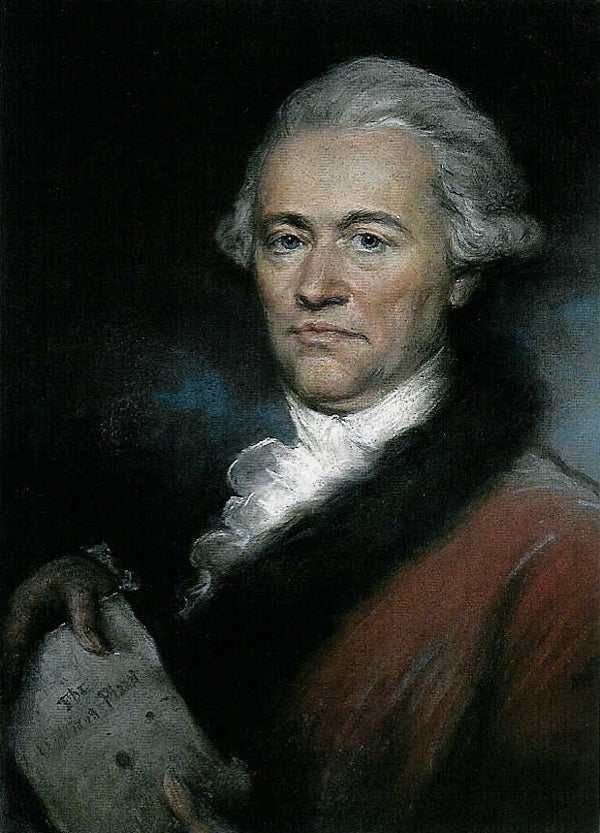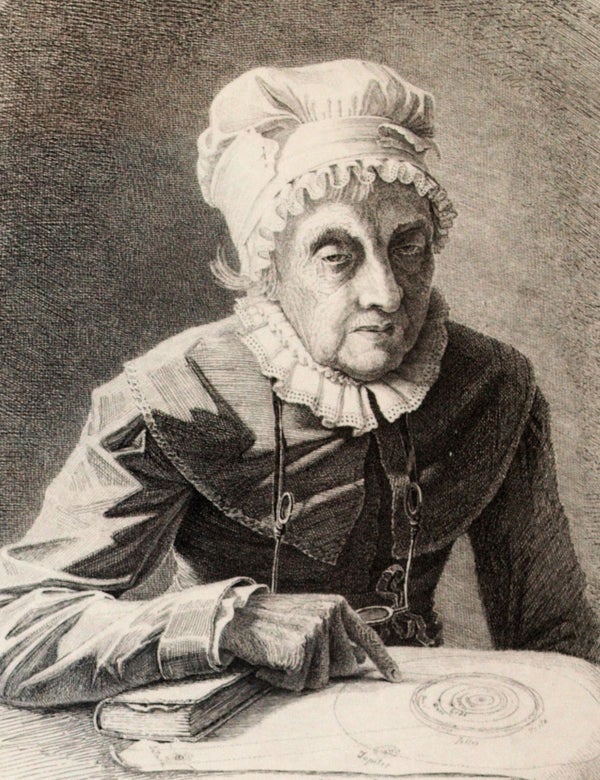Most notable of the Herschel clan were William, his sister Caroline, and his son John. These scientists made significant contributions to the field of astronomy. Their legacy of discovery stands even today.
William and Caroline had a great influence in their lives: their father, German musician Isaac Herschel (1707–1767). An oboist with the Hanover Military Band, the elder Herschel fostered within his ten children a love of music, curiosity, and a desire for learning that spanned disciplines and generations.
The following profiles detail the many discoveries, accomplishments, and awards bestowed on William, Caroline, and John Herschel. It is from shoulders such as theirs that modern astronomers will take the next steps of discovery.
Sir William Herschel (1738–1822)
(German-born English astronomer)
(German-born English astronomer)
Discoveries
- Mars and Jupiter show axial rotation
- Planet Uranus (1781)
- Uranus’s two largest moons, Titania and Oberon (1787)
- Two new saturnian moons, Enceladus and Mimas (1789)
- Infrared radiation, using lights and prisms (1800)
- 2,000 to 3,000 nebulae, star clusters, and galaxies
- The period of rotation of Saturn’s rings theorized by 18-century French mathematician and astronomer Pierre-Simon LaPlace
Accomplishments
- Observations of double stars (1782–1821)
- Demonstrated that the solar system itself moves through space
- Observed the disk-like shape of the Milky Way
- Coined the word “asteroid” (1802)
- Built more than 400 telescopes
Awards and honors
- Awarded The Royal Society’s Copley Medal (1781)
- Elected Fellow of the Royal Society (1781)
- Appointed the King’s Astronomer (1782)
- Lunar impact crater, Herschel, named in his honor
- Mars impact crater, Herschel, named in his honor
- Impact crater, Herschel, on saturnian moon Mimas named in his honor
- Herschel Space Telescope, named in his honor by the European Space Agency, will launch in 2007
Caroline Lucretia Herschel (1750–1848)
(German-born English astronomer and William’s sister)
(German-born English astronomer and William’s sister)
Discoveries
- 3 nebulae (1783)
- Periodic comet 35P/Herschel-Rigollet (1786)
- 7 other comets (1786–1797)
Accomplishments
- Brother William’s apprentice, assisted with observations and telescope-mirror grinding and polishing (1782–1822)
- Presented an Index to English astronomer John Flamsteed’s observations to the Royal Society (1797)
Awards and honors
- First woman publicly recognized for scientific efforts — she received a pension from King George III for her astronomical work
- Awarded the Royal Astronomical Society’s Gold Medal (1828)
- Honorary member of the Royal Astronomical Society
- Honorary member of the Royal Irish Academy
- Awarded the Gold Medal of Science by the King of Prussia (1846)
- Asteroid 281 Lucretia named in her honor (1888)
John Frederick William Herschel (1792–1871)
(English mathematician, astronomer, chemist, photographer, and William’s son)
(English mathematician, astronomer, chemist, photographer, and William’s son)
Accomplishments
- Named 7 saturnian moons
- Named 4 moons of Uranus, including the planet’s two largest, Titania and Obseron, years after his father’s death
- Introduced the Julian calendar into astronomy
Awards and honors
- Fellow of the Royal Society (1813)
- Fellow of the Royal Society of Edinburgh (1820)
- Co-founder of the Royal Astronomical Society (1820)
- Royal Society Bakerian lecturer (1823)
- Made a Knight of the Royal Guelphic Order (1831)
- Awarded the Royal Society’s Royal Medal (1833, 1836, and 1840)
- Awarded the Royal Society’s Copley Medal (1821 and 1847)
- Awarded the French Academy of Sciences’ Lalande Medal (1825)
- Cataloged the Southern celestial hemisphere from South Africa (1834–1838)
- Published Outlines of Astronomy (1849)











